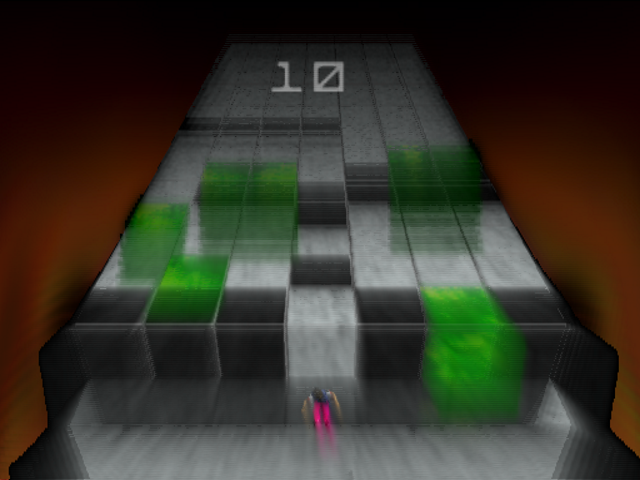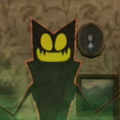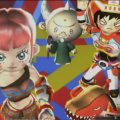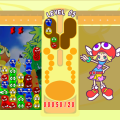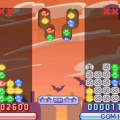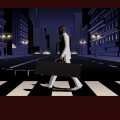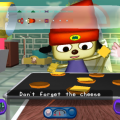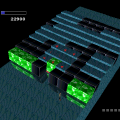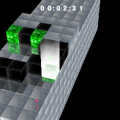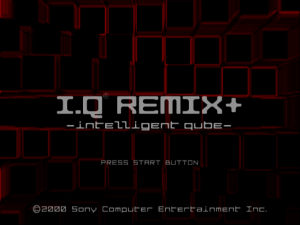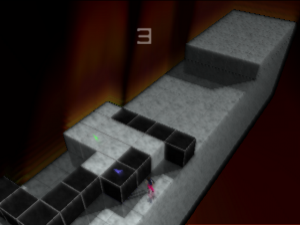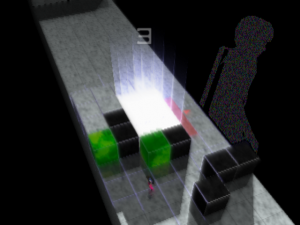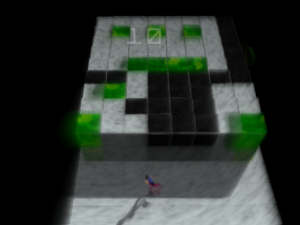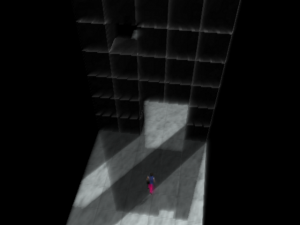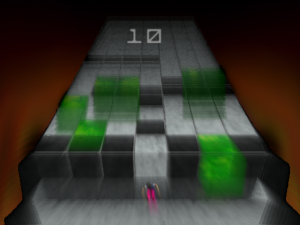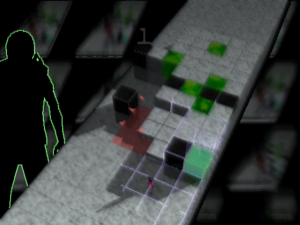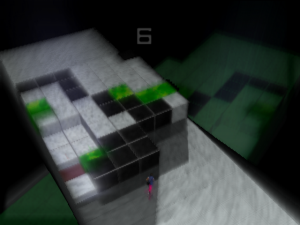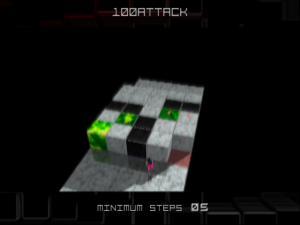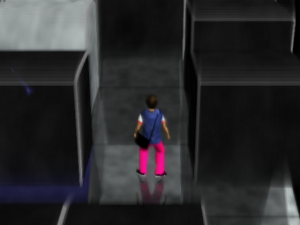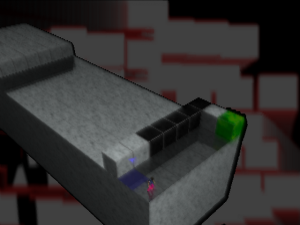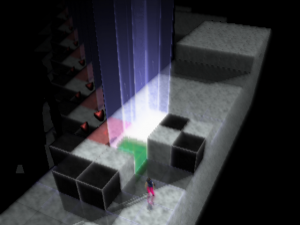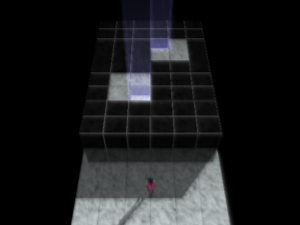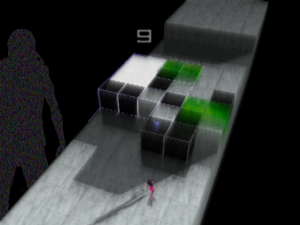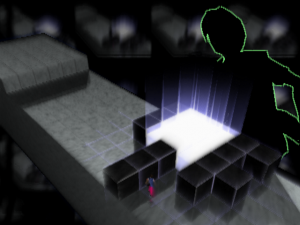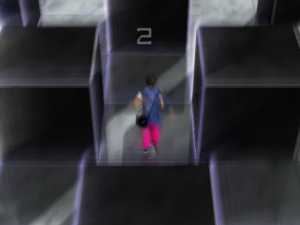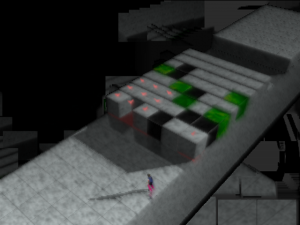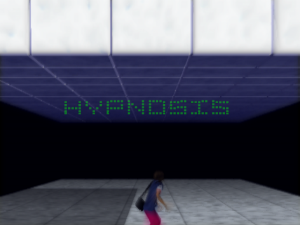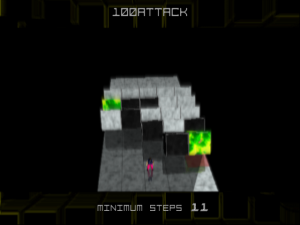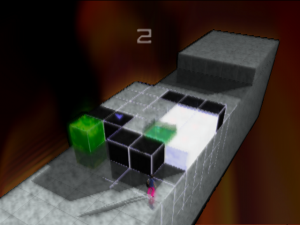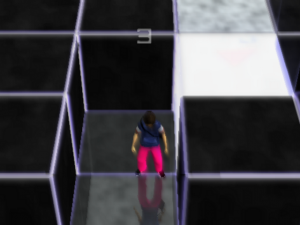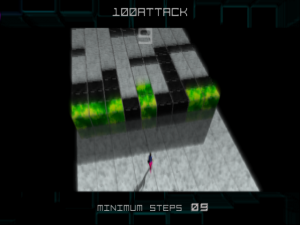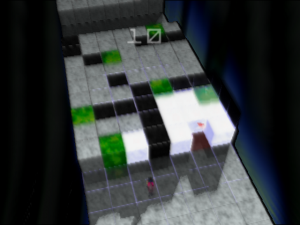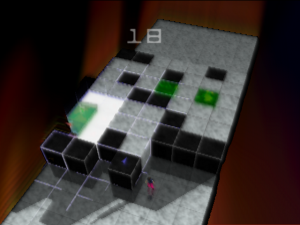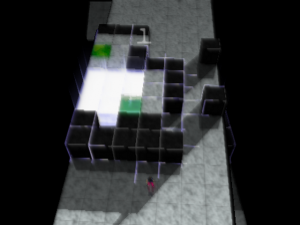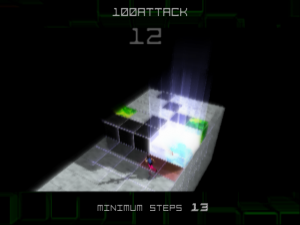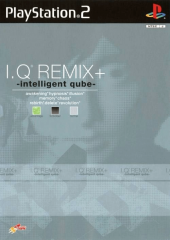
(NOTE: I.Q Remix+ features a bevy of complex visual effects, some of which weren’t presented properly in PCSX2 which was used for taking screenshots. As such, these aren’t wholly accurate representations of how the game is supposed to look.)
It’s a challenge to figure out how to follow up on a puzzle game. The temptation’s always there to introduce more mechanics, to increase the complexity and provide a suitable challenge for experts of the original, but that can just as easily throw off a perfectly maintained balance. Intelligent Qube‘s designer Masahiko Sato once discussed how he originally planned to feature more complex cube shapes, until he realized that it made the game too complex and unpredictable.
Another option is to rework the presentation, using the same classic gameplay but bringing in new sights and sounds to revitalize things (2018’s Tetris Effect is a famous example of this working like a treat). But that’s a big risk to take when Intelligent Qube‘s tone and feel is so uniquely crafted by its stark visuals and haunting soundscape.
Perhaps it was due to the jump to the next generation, as a title that came just weeks after the PS2’s Japanese launch, that it was decided to try both with the next game in the series. I.Q Remix+: Intelligent Qube provides a new take on the gameplay and visuals, and while the attempt is noteworthy, it also results in a weaker game and the most visually abrasive title by far.
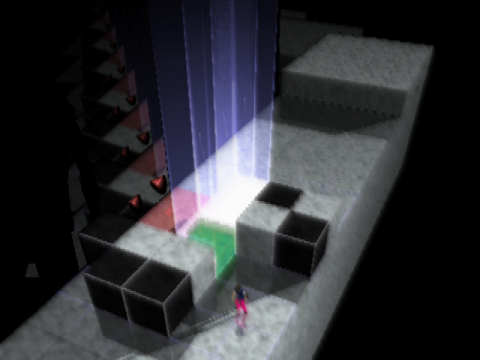
The core mechanics remain largely the same, although the ability to speed up the movement of cubes has been removed for whatever reason. Also, despite I.Q Final letting you control the character with the Left Analog Stick if you like, you can only move the character around with the D-Pad. You only have one playable character, and the Survival, Create and Tektonics modes have been removed completely.
The nature of progressing through stages has changed drastically. For a start, the game returns to having four rounds like in the original, but the last two rounds are completely reworked. The third round has you wandering through a maze of forbidden cubes, trying to escape out the other end while contending with a drastically zoomed in camera, and the fourth has you trying to find holes in a giant tower of forbidden cubes to hide in and avoid being squished.
Your progress is marked with checkpoints, which consist of five stages where each one introduces increasingly complex puzzles. If you reach the next checkpoint, the complexity of the puzzles resets but the game speed increases. The amount of rows persists throughout, so good play is rewarded by having more time to solve puzzles and mistakes compound on top of each other the more you play. As far as it can be discerned, there’s no end goal to reach and you simply keep playing for as long as possible (though playing for long enough will grant you with a credits sequence if you reach a game over).
This makes Remix a game of endurance, where the focus is on solving trickier and faster cube puzzles in order to get the highest possible score. While that works well enough, it does make for a more repetitive time that has a more niche appeal, when there’s nothing else to work towards or play around with like in previous games. The 100 Attack mode is at least still around if you want to solve another batch of unique cube puzzles.
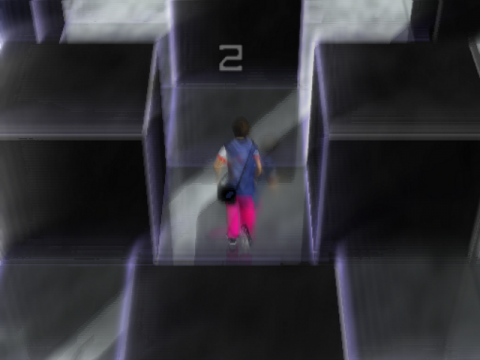
It’s also an endurance when it comes to the presentation, which jettisons the previous games’ style almost entirely. Apart from the rolling thud of the cubes, the soundscape is taken over by an eclectic, experimental soundtrack composed by Tetsuo Ishikawa. It utilizes many samples and bounces between various genres, and it’s as compellingly disorienting as it is abrasively distressing. That said, it compliments the main character’s tired exhaustion (as shown through end-of-stage cutscene where they fall to their knees after just barely surviving), and it works well alongside the new artstyle to create something rather unique.
The UI has been removed almost completely, placing focus on the many visual effects used throughout, such as motion blur, displaying brief silhouettes of the character whenever they mark a cube, and projecting the gameplay onto tiny screens in the background. It’s a bold step to take that can sometimes present cool imagery, and it’s admirable that it maintains the smooth framerate from previous titles. But it mainly makes the game hard to follow when there’s so many effects obscuring the visuals, nevermind if you suffer from photosensitivity or motion sickness issues. These effects sadly can’t be turned off, which makes this a harder sell than the other games.
This wasn’t released outside of Asia, though the fact it retains the same gameplay and features English text for nearly everything means that it’s easy enough for anyone to play if they’re curious.
